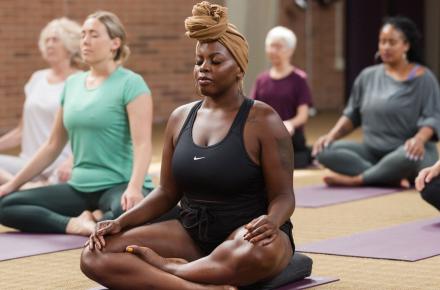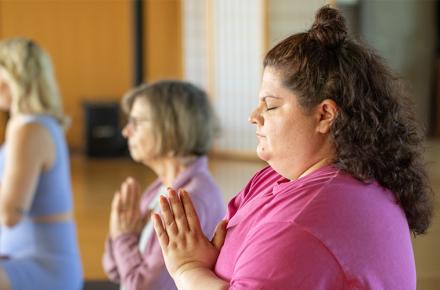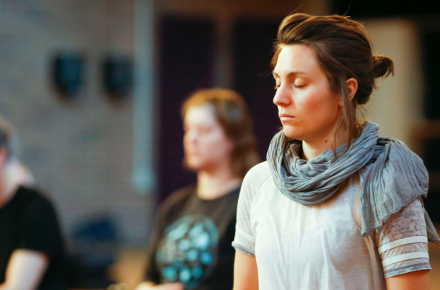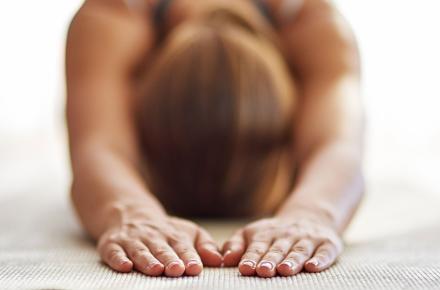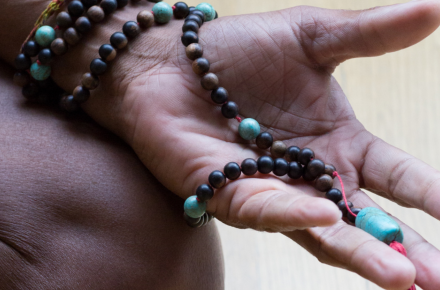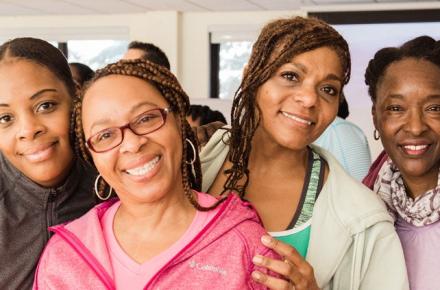To Scratch or Not to Scratch: Making Choices in Meditation


Here’s the quandary: You’re in the middle of what you hope will be a long meditation. About 10 minutes in, you feel an itch appearing on your nose that really, really, really wants to be scratched. You decide to remain still and not scratch it.
You watch the sensations grow and get more intense, but somehow you manage to stay present to it. Minutes later, you notice that there is nothing else going on in your universe other than this insanely active irritation screaming for you to oh-so-simply-and-quickly give it a quick scritch-scritch-scritch and make it go away.
But you’re meditating and you’re supposed be still, right? Is it legal to scratch this itch? Your mind is racing. You decide to hang on and watch the sensations a little bit longer.
Pretty soon, the thought occurs to you that you might die if you don’t scratch this. In fact, now that you are really paying attention, you’re pretty sure that right here, sitting quietly, unless you scratch right now, you will blow a fuse and gallop out of the room screaming and wildly rub your nose on the concrete steps in front of the building.
What should we do when we have an itch? What should we do when the body really wants to move or a leg falls asleep in meditation and we become convinced we will never walk again?
I have met a handful of long-term meditators who have chronic knee problems because their teachers directed them to sit through their pain. I have also met a number of meditators whose pain threshold is so low that they never move beyond constantly shifting, fidgeting, fussing, and trying to find the “perfect” position.
The answer, I think, lies somewhere in between stoically sitting through the unpleasantness and reacting to every flicker of discomfort. At least this is what I try to do in my practice when I have the presence of mind to do so. If I am meditating and I feel pain arise, I try to bring awareness to the sensation itself, rather than indulging in the commentary from my over-eager mind, which is usually more than willing to offer an opinion.
Joseph Goldstein once said, “There are only three things that can happen with pain. It will either get worse, stay the same, or get better.” When the sensation gets so strong that it becomes intolerable, here is what I have found to be the key: Slow the process down.
Sometimes just recognizing and naming the sensation of discomfort is enough. Noting internally “throbbing, throbbing” or “tingly, tingly” keeps my attention present. I may be able to remain a neutral observer and the feelings might move on relatively quickly. If the sensations get more intense, I might let the whole process become a point of mindful attention.
Sensation falls into three categories: unpleasant, pleasant, and neutral. I find it quite fascinating to bring my attention as intimately as I can into this play in any particular point in the body where I feel discomfort. When I have the presence of mind to stay with pain, it’s quite amazing to see just how close a unpleasant sensation can reside next to one that feels okay.
It's also incredibly rich to watch my relationship to what’s happening. How I react in meditation exactly mirrors how I react to pain in the rest of my life. Generally what underlies these reactions is fear—and from fear comes a proliferation of thoughts and responses. Sometimes I’m curious. Sometimes I want to nuke it or numb myself out. Sometimes I get angry. Sometimes I’ll find myself analyzing it and trying to figure it all out. Sometimes I lose energy and confidence and just want to give up. Sometimes I drift into fantasy or planning—anything to not experience what’s really going on.
When I slow down and pause, I might notice that the sensations are constantly in motion. Even the most intense discomfort, if I stay with it long enough, will reveal itself to be a lively spot of shifting energy. This is the realization of impermanence—that everything, even what feels like intractable pain, changes.
We have two choices then. We can stay with that urge to scratch, with awareness—or we can move, with awareness. Any time during meditation when you want to scratch an itch, move your legs, or adjust your seat, notice if you can make your response a choice rather than a reaction.
So, go ahead and scratch that itch on your nose. And as you do so, feel your hand lifting. Stay awake to the action of scratching, the shifting sensations in the skin and around the area. Feel the lowering of your hand again to your lap. These are moments of wakefulness.
A meditation teacher once told me that, each time we wake up in a story or in a reaction, we have a choice. We can either beat ourselves up for forgetting what we were concentrating on, or we can celebrate the fact that we remembered.
Just as, in the practice of meditation, there is no condemnation of thinking, there is no condemnation of strong sensation and the desire to get rid of it. The freedom comes when we stay awake, when we ride those moments of discomfort, and when we stay present to the flow of life moving through us.






























